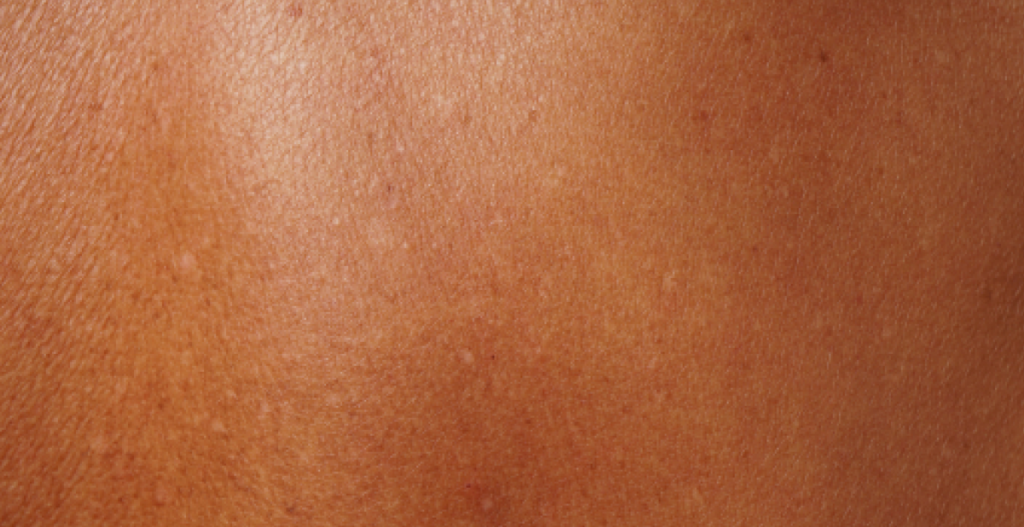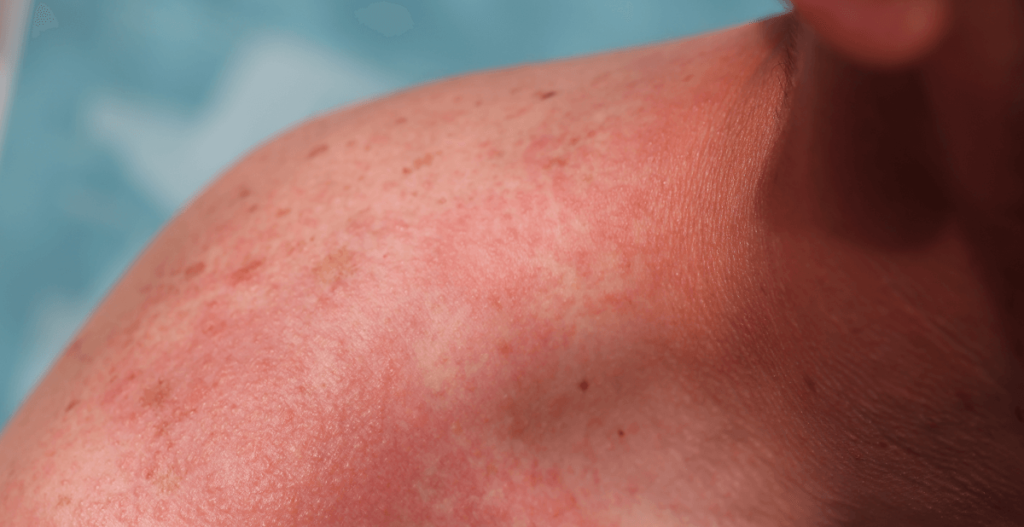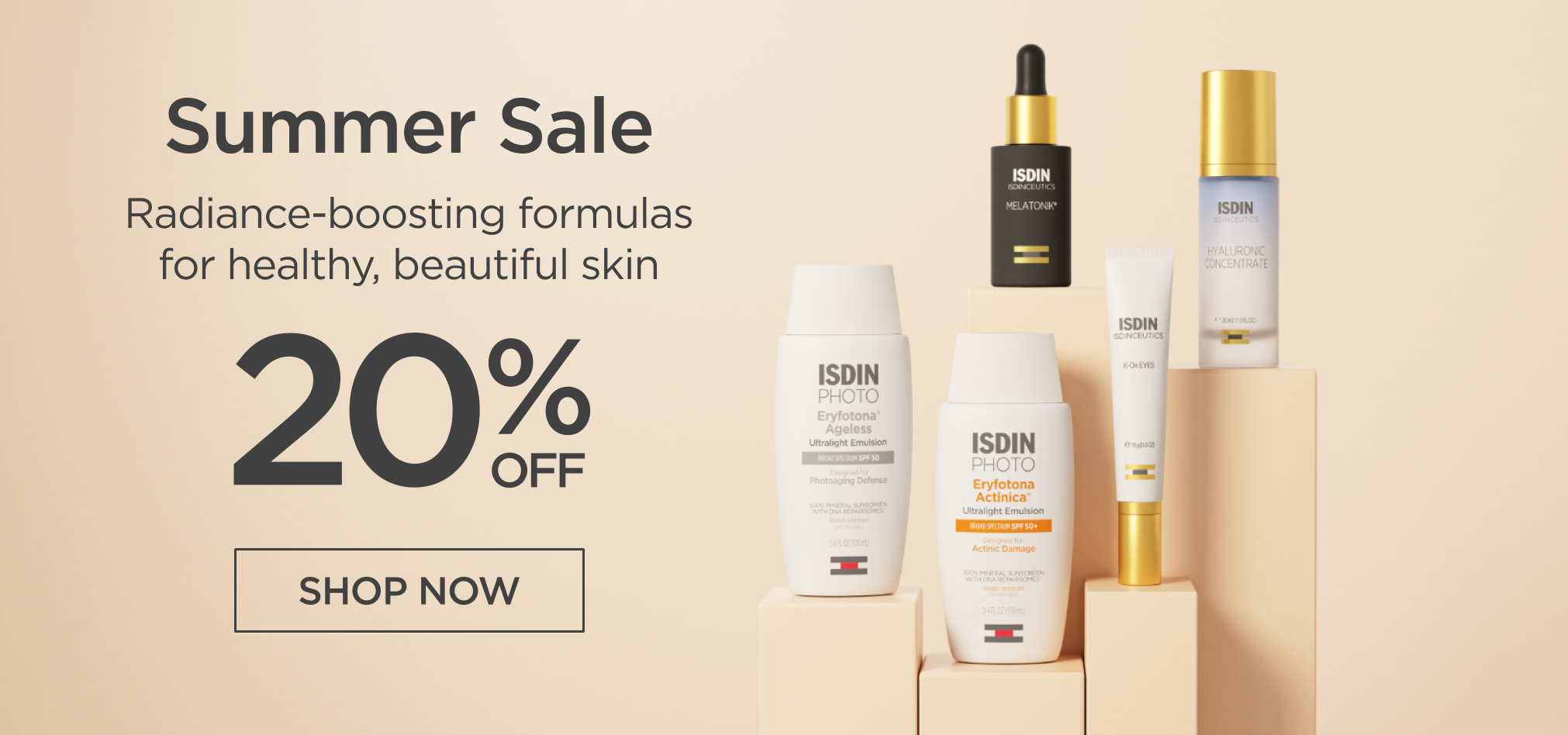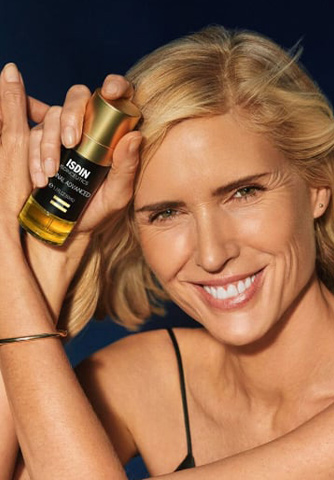As the first warm rays of sunshine arrive, everything calls us outside—a walk, a spontaneous picnic, or simply that blissful moment of closing your eyes and soaking up the sun. But what happens when that peaceful moment turns into an itchy, red rash?
You could be dealing with a sun allergy, a skin reaction that’s more common than you might think. In fact, it’s estimated that up to 20% of people in the United States experience it—especially at the start of spring and summer. And although they usually aren’t serious, they can be uncomfortable.
We spoke with Alessandro De Luca, Medical Affairs Specialist at ISDIN, to better understand this phenomenon and how to manage it. Today, we’re diving into what sun allergy really is, who’s more likely to get it, and how to help prevent it—without missing out on the sunshine.
Let’s get started.
Table of Contents
What is a sun allergy?
As soon as we sit down with Alessandro, he wants to clarify one thing: “Sun allergy is actually an umbrella term for a few different conditions. But, when people say sun allergy or sun rash, they’re usually referring to a common reaction called polymorphous light eruption, or PLE.”
So, what’s the difference? “PLE shows up as a rash on areas exposed to sunlight—often during the first few times you’re out in the sun, like early spring or summer. It tends to occur more often in people with lighter skin tones,” he explains.
Alessandro also brings up another condition called solar urticaria. “This is chronic photosensitivity to sunlight that causes hives. It can affect any skin tone and appear anywhere on the body. It’s much less common than PLE. But since they’re two different things, both could show up at the same time.”
To sum things up, the term sun allergy is a broad one. And the most common type of sun reaction is actually a specific condition called polymorphous light eruption—that’s what we’ll focus on in this article.

What is periodic sun rash (polymorphous light eruption)?
PLE is a rash triggered by solar radiation in people who are sensitive to sunlight. These itchy, red, inflamed bumps or patches often pop up on the chest, forearms, lower legs, or feet a few hours to days after your first sunny outing of the season.
“Most often, it shows up in spring or on the first warm days of the year, when your skin hasn’t had time to adjust,” says Alessandro. It’s not exactly the sunny welcome you’d hoped for… But the good news? It usually goes away on its own within a week or two and doesn’t leave any permanent marks.
What does sun rash look like?
People usually notice small red bumps or patches that itch, burn, or sting. What’s interesting? It often affects areas that were covered during winter, like your chest, arms, or the backs of your hands.
“Many people don’t realize it’s a sun reaction because it doesn’t look or feel like a typical sunburn,” Alessandro explains.

What causes a sun allergy?
Since the word sun allergy covers a lot of things, there are a variety of causes. Some people have a type of sun allergy that’s passed down through genetics. Others have specific triggers — such as certain medications or even contact with plants. And many of the causes behind sun reactions are still being studied.
Common sun rash or PLE is thought to be caused by your body’s immune response to sunlight after a season spent mostly indoors. Think of it as your body saying, “Whoa, that’s a lot of sun!” after being out of practice.
Who’s more likely to experience a sun allergy?
Sun allergies can affect anyone, no matter your age, gender, or skin tone. But there is a pattern.
PLE makes up about 70% of all skin reactions from the sun. It tends to affect young women with lighter skin tones who live in places with big seasonal shifts—where winter and summer feel worlds apart. Alessandro elaborates, “This type of reaction often starts in adolescence or your 20s, especially in women. And once it appears, it may come back each year.”
“The interesting thing,” he adds, “is that your skin can be ‘trained.’ As sun exposure increases over the season, the reaction usually gets milder—or may stop happening altogether.”

What increases your chances?
Certain factors can make you more prone to sun rash:
- Having a light skin tone that burns easily
- Living in areas with long winters or low sunlight
- A family history of sun reactions
- And yes… being female, according to clinical studies
How can you help treat a sun allergy?
First things first, get your dermatologist involved. “Remember that sun allergy is an umbrella term, and your dermatologist will be able to best diagnose the type and advise treatment,” advises Alessandro.
When it comes to PLE or periodic sun rash, it’s best to get your first rays gradually to help minimize symptoms. “One of the most common mistakes is jumping back into full sun exposure after months without it,” Alessandro shares. “Just like your body needs to ease into exercise after a break, your skin needs time to adjust.”
These two habits can make a big difference:
- Start with short periods of sun exposure, during lower-intensity hours (before 11 a.m. or after 5 p.m.). This helps your skin gradually adapt to sunlight without overreacting.
- Use sunscreen every day, even on cloudy days or when you’re only outdoors briefly. Choose an all-mineral formula with broad spectrum SPF 50+ protection. Remember to reapply at least every two hours.

Just the FAQs
Is a sun allergy serious?
Most of the time, periodic sun rash (or PLE) clears up on its own within a few days. But that doesn’t mean you should ignore it. Always consult your dermatologist if you notice something unusual or if it happens year after year.
Here’s when you should seek immediate medical care:
- Your rash is spreading quickly or already widespread
- Your rash is painful
- You also have a fever
Is a sun allergy an autoimmune disease?
It depends, since there are many types of sun allergies. In the case of PLE, the most common form of sun allergy, yes—it’s considered a mild autoimmune response. Immune cells in people with PLE react to UV rays, triggering a defense response in the skin.
Now you know a little more about your skin and the most common sun allergy: polymorphous light eruption. And remember, the good news is that it’s usually temporary and manageable at home.
With the right protection, a bit of patience, and plenty of care, you can keep enjoying the sunshine stress-free. Take your time—you’ve got all summer!
References:
1 Frcpc, S. a. a. M. (n.d.). Polymorphous Light Eruption: Background, Pathophysiology, Etiology. https://emedicine.medscape.com/article/1119686-overview
2 Gruber-Wackernagel, A., Schug, T., Graier, T., Legat, F. J., Rinner, H., Hofer, A., Quehenberger, F., & Wolf, P. (2021). Long-Term Course of Polymorphic Light Eruption: A Registry Analysis. Frontiers in Medicine, 8. https://doi.org/10.3389/fmed.2021.694281
3 Harris, B. W. (2022, September 27). Solar Urticaria. StatPearls – NCBI Bookshelf. https://www.ncbi.nlm.nih.gov/books/NBK441986/
4 Oakley, A. M. (2022, August 8). Polymorphic Light Eruption. StatPearls – NCBI Bookshelf. https://www.ncbi.nlm.nih.gov/books/NBK430886/





